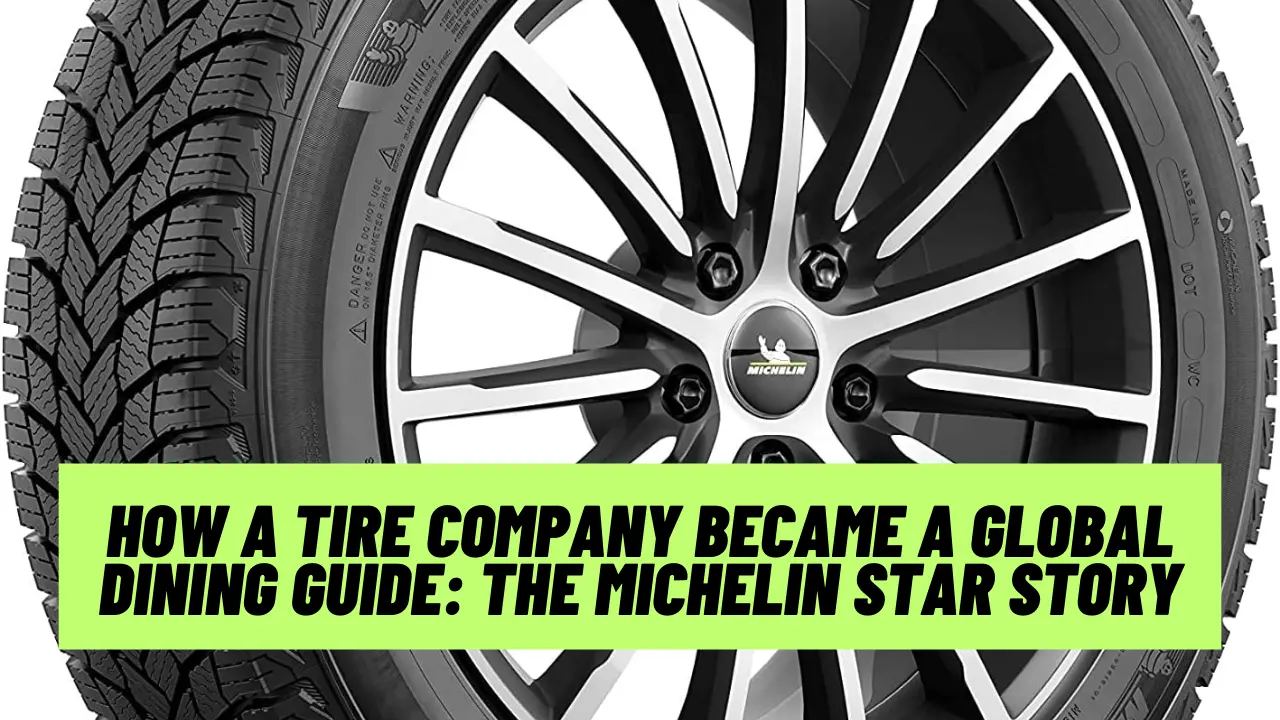When you think of Michelin, the first images that probably come to mind are tires and the iconic Michelin Man. Surprisingly, the Michelin brand is just as renowned in the culinary world for its prestigious dining guide, the Michelin Guide. But how did a tire company become synonymous with fine dining? Let’s delve into the fascinating history of Michelin and its journey from tires to tables.
The Beginnings of Michelin
Michelin & Cie, founded by brothers Édouard and André Michelin in 1889 in Clermont-Ferrand, France, quickly became a leading tire manufacturer. They revolutionized the automotive industry with innovations such as the removable pneumatic tire and the radial tire, which significantly improved vehicle performance and safety.
The Birth of the Michelin Guide
In 1900, the automotive industry was still in its infancy, and the Michelin brothers faced a unique challenge: how to encourage more people to buy cars and, consequently, more tires. Their solution was to create a guidebook that would enhance the overall motoring experience. Thus, the first Michelin Guide was born.
The Original Michelin Guide was a small, red booklet given away for free. It included maps, practical information on how to change tires, where to refuel, and, importantly, lists of hotels, mechanics, and restaurants along popular routes. The goal was simple: to help drivers travel more and further, thereby increasing tire sales.
Evolution into a Culinary Bible
The Star System
In the 1920s, the guide began charging for copies and introduced its famous star rating system in 1926 to highlight exceptional dining establishments. Initially, there was only a single star awarded, but in 1931, the guide expanded to include the now-famous three-star system:
- One star indicated “a very good restaurant in its category.”
- Two stars denoted “excellent cooking, worth a detour.”
- Three stars signified “exceptional cuisine, worth a special journey.”
This rating system turned the Michelin Guide into the definitive authority on fine dining, with chefs and restaurateurs around the world striving for the coveted Michelin stars.
Expanding Beyond France
As the automobile industry expanded globally, so did the Michelin Guide. The first non-French edition was launched in Belgium in 1904. Over the decades, the guide has expanded its reach to cover numerous countries across Europe, Asia, and the Americas, adapting to different culinary landscapes while maintaining its rigorous standards.
Why the Michelin Guide Remains Influential
Uncompromising Standards
One of the reasons the Michelin Guide has maintained its influence is its stringent and secretive evaluation process. Michelin inspectors dine anonymously and pay their bills like any other customer, ensuring that restaurants cannot cater specially to them. This approach guarantees that the reviews are unbiased and reflective of a typical dining experience.
Global Recognition
Achieving a Michelin star (or three) can transform a restaurant’s fortunes overnight. It brings international recognition, increases bookings, and often justifies higher prices. Conversely, losing a star can be devastating for a restaurant’s reputation and business.
Cultural Impact
The Michelin Guide has transcended its original purpose of promoting travel and has become a cultural icon. It highlights the world’s culinary diversity and excellence, celebrating everything from high-end gastronomy to hidden gems. Today, being featured in the Michelin Guide is a mark of prestige that attracts food enthusiasts globally.
From Tires to Tables
The Michelin Guide’s journey from a promotional tool for a tire company to a prestigious culinary guide is a testament to innovation and adaptability. By encouraging people to explore the world through travel and dining, Michelin has created an enduring legacy that links their brand to both quality tires and gourmet food.
So, next time you dine at a Michelin-starred restaurant or even flip through the Michelin Guide, remember that it all started with a simple goal: to sell more tires by making travel more enjoyable.
In a way, Michelin’s story is a perfect example of how a business can evolve and diversify, turning a promotional idea into a cultural phenomenon that stands the test of time.
